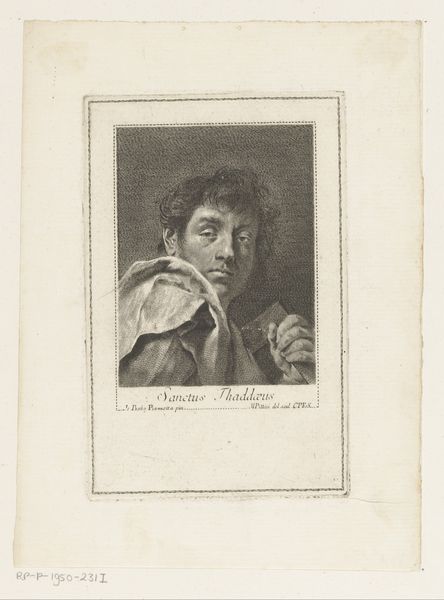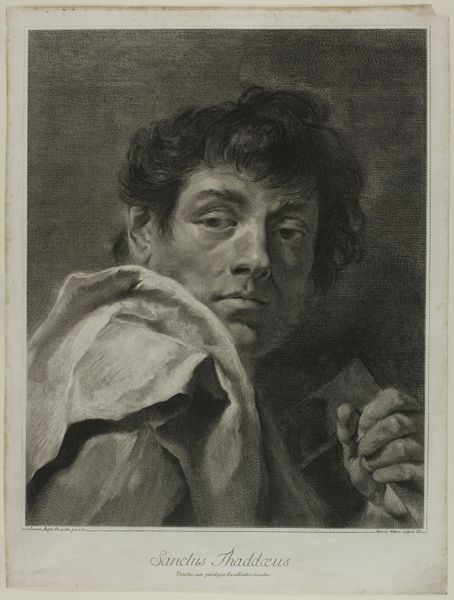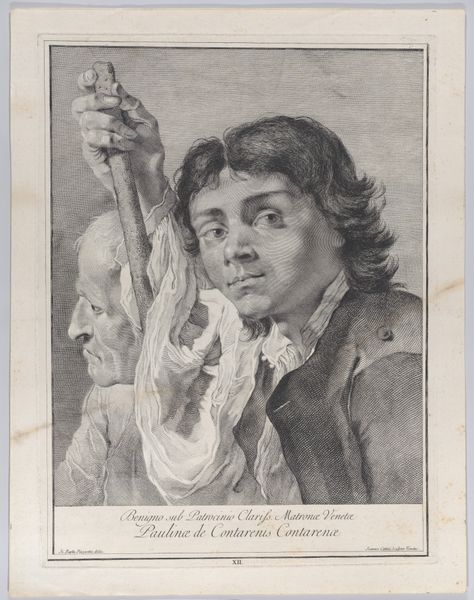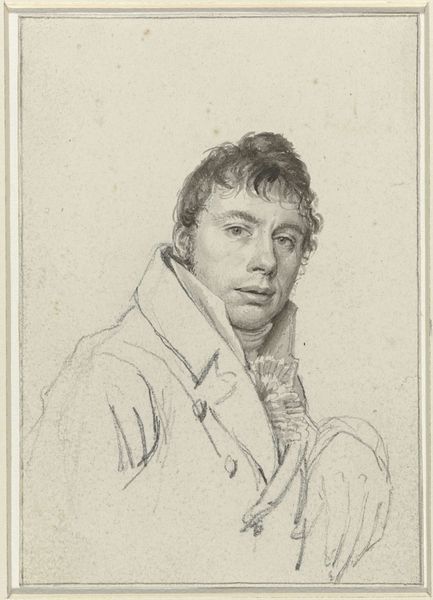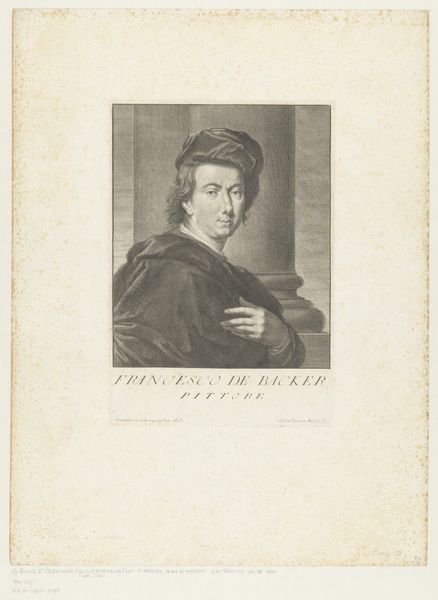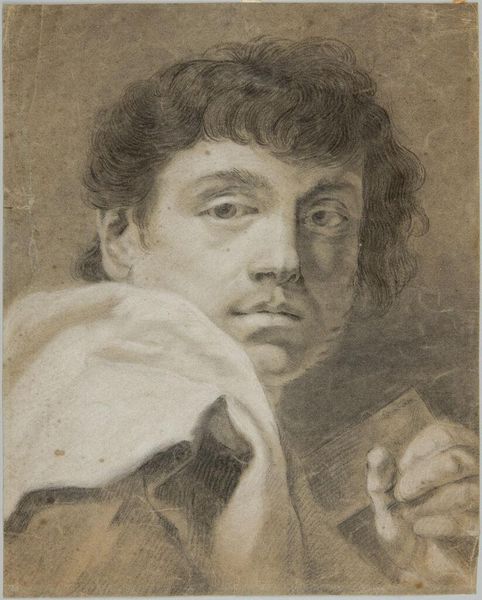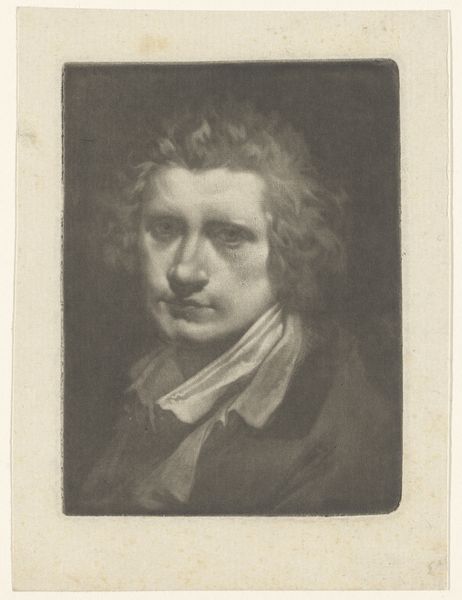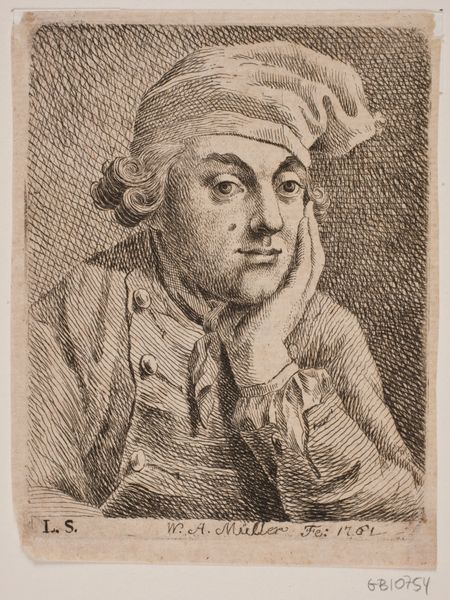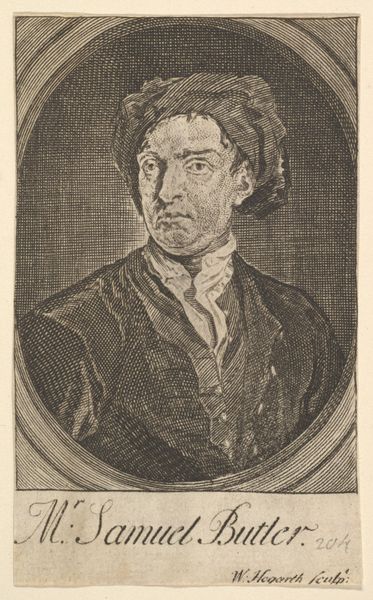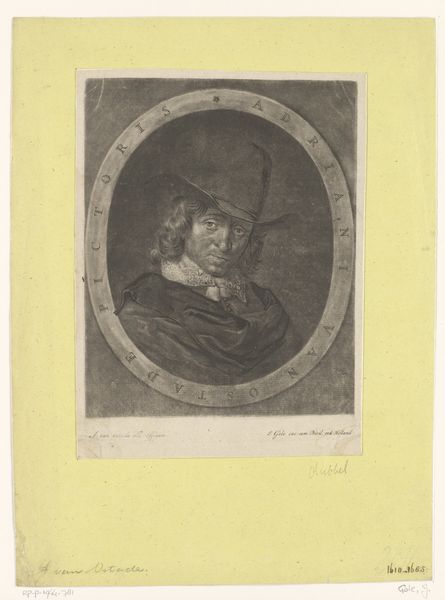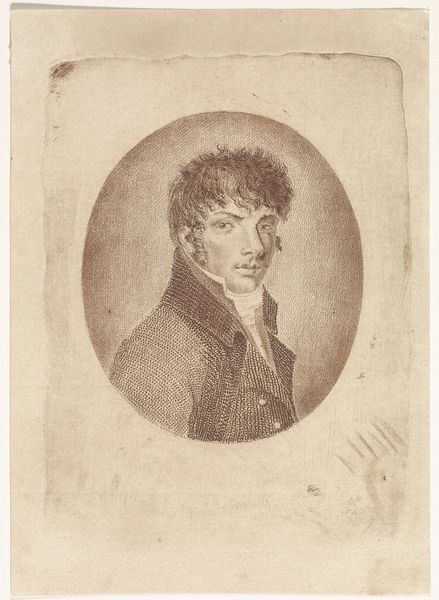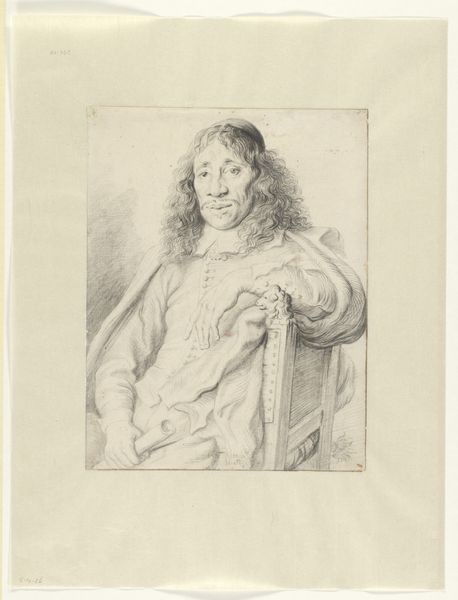
print, engraving
#
portrait
#
aged paper
#
toned paper
#
baroque
# print
#
old engraving style
#
engraving
Dimensions: height 159 mm, width 105 mm
Copyright: Rijks Museum: Open Domain
Curator: Look at this, a portrait titled "Apostel Judas Thaddäus," or "Apostle Jude Thaddeus," by Giovanni Marco Pitteri, likely created between 1712 and 1786. What's your take, friend? Editor: Intrigued, instantly. It gives off this incredibly subtle, melancholic vibe, despite being quite detailed for a print. There's a weariness in the Apostle's eyes. Almost a weight he carries...or is it just the toned paper aging theatrically? Curator: I’d argue Pitteri really emphasizes line here, wouldn't you say? The quality of the engraving speaks to that. See how he creates depth using only variations in the fineness and density of those etched lines. A real testament to process! Editor: Absolutely. It highlights the labour behind these now ‘mass-produced’ religious icons of Baroque printmaking, elevating the status of engraving at the time. Also, Judas seems to be clinging to some kind of object here - like a square or possibly a book? Is this meant to give insight to how he made objects or engaged with others? Curator: Some scholars identify it as a club. If so, that can give us greater insight. The club might relate to his martyrdom in tradition. He's usually depicted holding a club or halberd, instruments of his death. This interpretation allows us to see him not just as an individual but as a figure of unwavering faith. Editor: Right. But isn't that intriguing then? The means of its production, the way it was disseminated. Religious iconography made available through print—talk about making the divine tangible. The Baroque clearly plays with surface texture; look how even a ‘low’ medium like print has the potential to make a truly high impact. Curator: It is a testament to print's strength. We begin thinking about how, from simple etched lines on a metal plate, a narrative, a sense of emotion, a complete world can be spun, one meant for countless hands. Editor: Exactly. That’s the fascinating contradiction that lives on the surface here. Curator: Well, thinking of dissemination, that engraving reminds me of how stories outlive materials. The idea will probably still inspire long after the print is forgotten, wouldn't you say? Editor: Certainly! It has left a profound resonance, after all. Thanks to Pitteri's skilled hand, it certainly shows that materials and means, however modest, really shape how these stories stay with us.
Comments
No comments
Be the first to comment and join the conversation on the ultimate creative platform.
